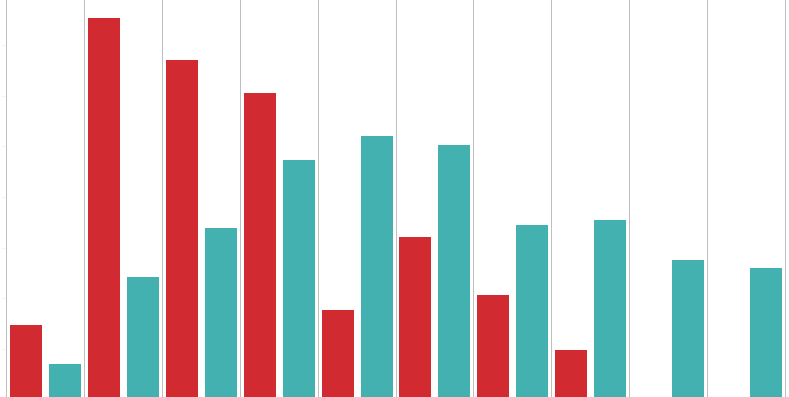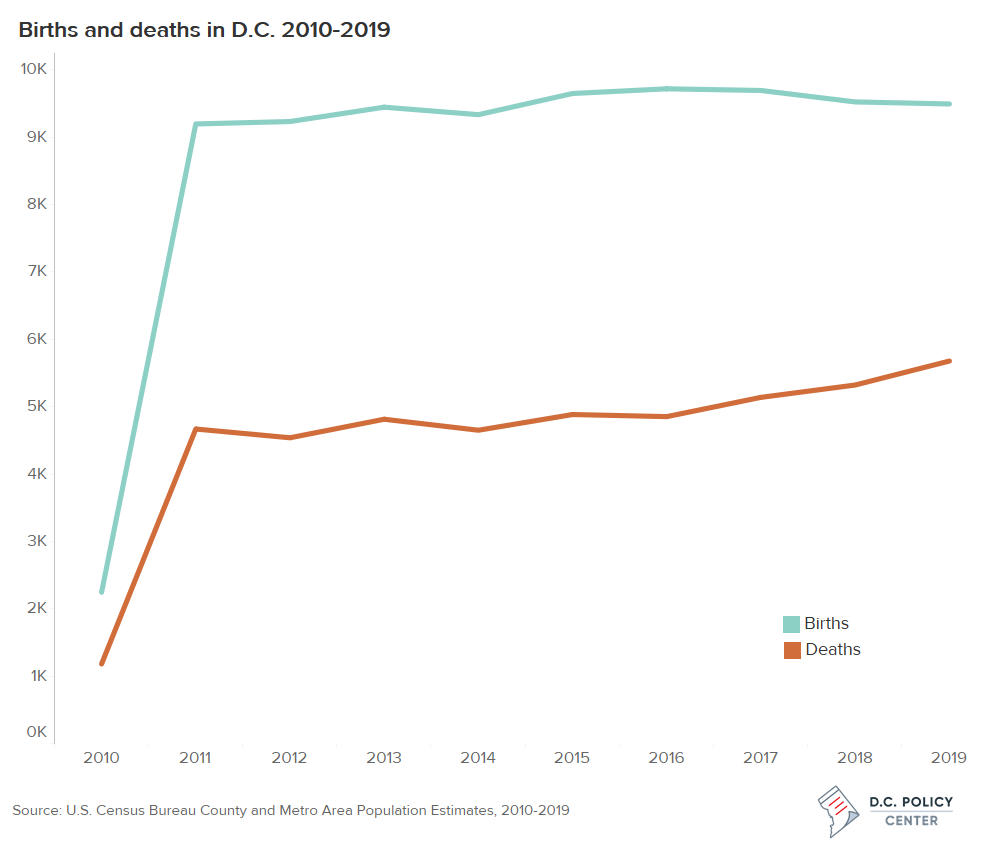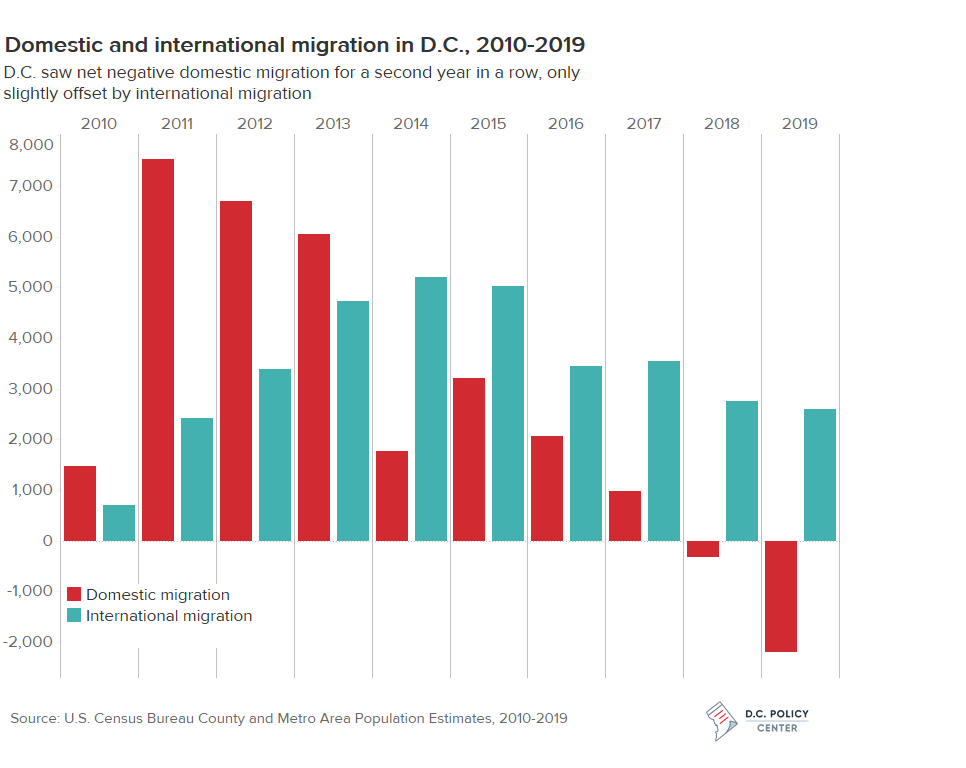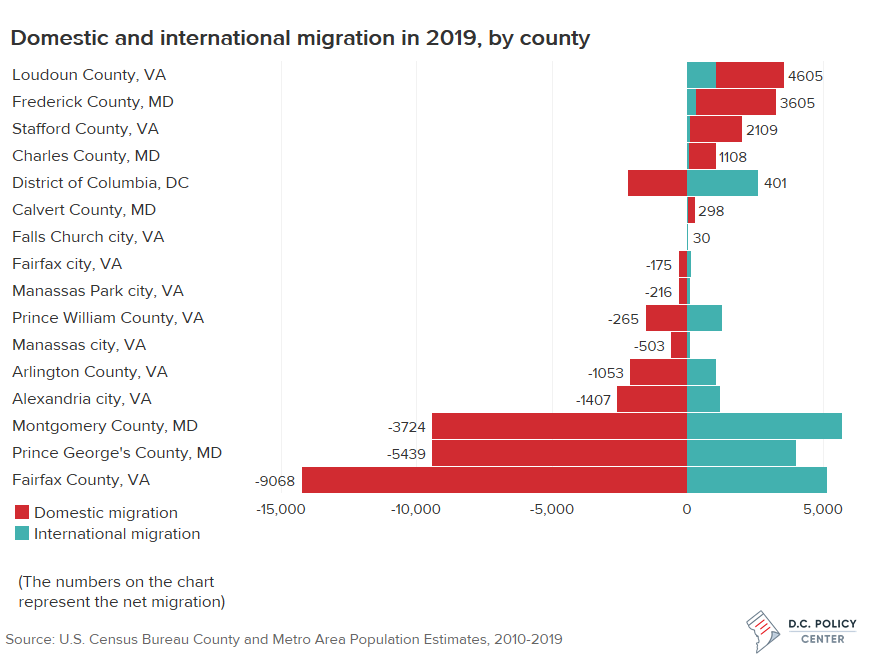According to the latest population estimates released by the Census Bureau, D.C.’s population grew by just 4,202 residents last year, which is only 37 percent of the average annual growth since 2010. Almost all of this net growth—91 percent—is due to natural growth, or the number of births minus the number of deaths. In-migration, or people moving to D.C. from other parts of the country or other parts of the world, had been the primary propeller of population growth as recently as 2017, but fell to just 401 last year.
Taken together, the rate of D.C.’s population growth is the lowest it has been since 2005: Just 0.6 percent compared to the previous year, comparable to the national rate of 0.5 percent.
Natural growth is weaker, but births in the District remain strong
The natural increase in the population of the District, as well as the greater metropolitan area, was lower than that of previous years. There was little change in the births from the year prior, which remains strong and was 9.4 percent greater than the decade average. The number of deaths in D.C., however, has grown in relation to the number of births, which explains the relative decline in natural growth.
Migration to D.C. comes to a virtual stop, with the highest domestic outmigration in a decade
While domestic migration was a major driver of D.C.’s population growth earlier in the decade, bringing net domestic migration has fallen over time. D.C. began to see net outmigration in 2018, as more people moved from D.C. to other parts of the country than moved to D.C. domestically. In 2019 this was negative for the second year in a row, with the net loss of 2,203 residents to other parts of the country.
Overall net migration has remained positive, however, because this loss has been offset by positive international migration—but just barely. The net number of people who moved to D.C. from other countries was 2,604, meaning that the District’s net migration from all sources was just 401 last year, virtually coming to a halt.
Looking at the rest of the region, 11 counties in the broader metropolitan statistical area had a higher population growth rate than the District, including four out of the 14 inner counties. Outer counties in particular saw strong growth and in-migration, relatively speaking: Stafford and Loudoun counties had the largest population growth rates, and compared to its relatively small population size, Stafford County also had the greatest domestic and overall migration rates. Loudoun County continued to expand, with highest reported absolute numbers by far for population change (domestic in-migration as well as net migration), while Montgomery County had the greatest absolute amount of international in-migration.
Meanwhile, Fairfax County once again had the largest net loss in domestic and overall migration, losing 9,068 residents. However, measuring net migration relative to the size of the total population, the areas where people left at the highest rate were Fredericksburg and Manassas Park cities. Fairfax and Manassas cities also reported the largest relative natural increases in population.
D.C.’s slowing growth mirrors national trends
The slowing population growth in the District mirrors the national trend with an increasing number of residents, especially young adults, moving out of urban areas due to region’s increasing costs of living—including housing costs and child care—and the growing economy in suburbs.
Even though the Washington metropolitan area continues to grow, and ranks in the top ten metropolitan areas for the largest numerical increase in population between 2010 and 2019, migration to the entire region has been falling since 2017. Within the ten most populous metropolitan areas in U.S., the D.C. area falls in the lower half for population growth rate; specifically, it fares poorly in terms of relative domestic and net migration, although only two other metropolitan areas in the top ten have higher relative international migration. Overall, however, the D.C. area’s international in-migration and births continue to offset its losses through domestic out-migration.



